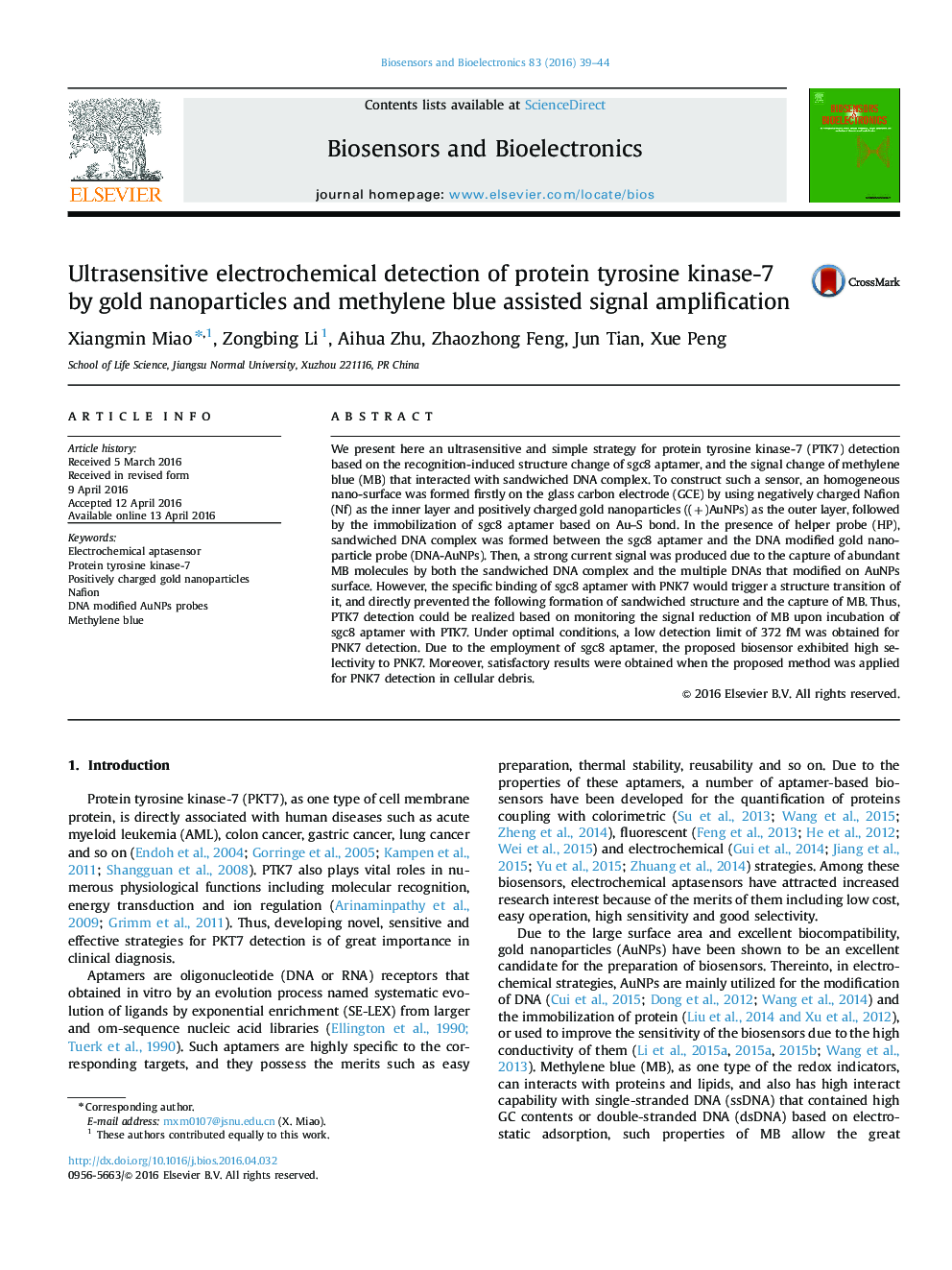| Article ID | Journal | Published Year | Pages | File Type |
|---|---|---|---|---|
| 866203 | Biosensors and Bioelectronics | 2016 | 6 Pages |
•4 nm of (+)AuNPs were introduced to enlarge the electrode surface for the first time.•MB can directly interact with ssDNA or dsDNA, making such method simple to operate.•A low detection limit of 372 fM was obtained for PTK detection due to (+)AuNPs amplification.•The proposed method is highly specific to PTK7 due to the application of sgc8 aptamer.•Satisfactory results were obtained for PTK7 detection in cellular debris.
We present here an ultrasensitive and simple strategy for protein tyrosine kinase-7 (PTK7) detection based on the recognition-induced structure change of sgc8 aptamer, and the signal change of methylene blue (MB) that interacted with sandwiched DNA complex. To construct such a sensor, an homogeneous nano-surface was formed firstly on the glass carbon electrode (GCE) by using negatively charged Nafion (Nf) as the inner layer and positively charged gold nanoparticles ((+)AuNPs) as the outer layer, followed by the immobilization of sgc8 aptamer based on Au–S bond. In the presence of helper probe (HP), sandwiched DNA complex was formed between the sgc8 aptamer and the DNA modified gold nanoparticle probe (DNA-AuNPs). Then, a strong current signal was produced due to the capture of abundant MB molecules by both the sandwiched DNA complex and the multiple DNAs that modified on AuNPs surface. However, the specific binding of sgc8 aptamer with PNK7 would trigger a structure transition of it, and directly prevented the following formation of sandwiched structure and the capture of MB. Thus, PTK7 detection could be realized based on monitoring the signal reduction of MB upon incubation of sgc8 aptamer with PTK7. Under optimal conditions, a low detection limit of 372 fM was obtained for PNK7 detection. Due to the employment of sgc8 aptamer, the proposed biosensor exhibited high selectivity to PNK7. Moreover, satisfactory results were obtained when the proposed method was applied for PNK7 detection in cellular debris.
